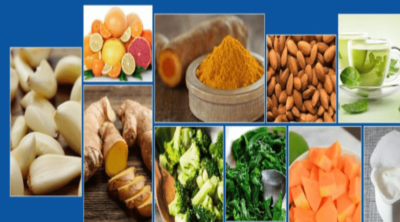
The hydrolyzed soy protein is commonly used to add flavor to foods and also in the preparation of cosmetics. The important facts about this chemical, along with that of the allergies is presented in the article…
The use of hydrolyzed soy protein in cosmetics and food products is well-known. The alternative names used in reference with this protein are Protein Aus Sojabohnen, Hydrolysierte Sojaproteine and Hydrolysiert. Although this form of soy protein is used in a variety of products, it can also cause allergies in few people.
What is Hydrolyzed Soy Protein?
The process of enzymatic hydrolysis of soy flour results into the production of hydrolyzed soy protein. The solution of soy protein after boiling is treated with caustic soda. Neutralization by means of caustic soda is the process which takes place after boiling. At the end of neutralization process, the remaining sludge is scraped off; this sludge is then dried. Hydrolyzed soy protein is of vegetable origin and possesses a light color; it has low odor. The soybean plant, Glycine soja is used in the preparation of this protein. The main difference between ordinary soy protein and the hydrolyzed one is that the latter has smaller chains of amino acids; this form of protein is completely hydrolyzed.
Uses
This type of soy protein is used in the preparation of foods and cosmetics. Hydrolyzed soy protein falls in the category of foods that act as fillers.
Food
The use of hydrolyzed soy protein is found in flavor enhancers. Monosodium glutamate (MSG) is one of the common flavor enhancers used in food products. This protein offers a flavor similar to that of MSG. It can therefore, be used in spices, broths, frozen vegetables, etc.
Cosmetics
Hydrolyzed soy protein is one of the best skin care products available in the market. This cosmetic product offers the benefit of moisture retention; it is therefore, possible to overcome the problem of wrinkles by using this product. The isoflavones present in hydrolyzed soy protein are responsible for preventing the aging caused by hormones. Health of hair can also be maintained by using this protein. Along with moisture retention, other benefits offered by soy protein are that of improvement in texture and gloss; tensile strength of hair also is increased with the use of this hair care product.
Allergy of Hydrolyzed Soy Protein
It is one of the commonly observed food allergies. A person who is allergic to soy protein can exhibit different reactions ranging from mild to severe. The commonly observed symptoms of this allergy are as follows: eczema, dizziness, hives, itching, wheezing, tingling of the lips, abdominal pain, chest tightness, nausea, diarrhea, vomiting, etc.
Treatment for Allergy
One should immediately stop using hydrolyzed soy products and go for treatment measures. The treatment of skin reactions resulting from intake of soy protein is possible with the help of medications like hydrocortisones. Itching and swelling can be reduced with the use of this medication. Antahistamines recommended for treatment of skin rashes can also be used in treating soy protein.
Hydrolyzed Protein Safety
The hydrolyzed form of protein falls in the category of ‘indirect food additives’. Food and Drug Administration (FDA) has placed this protein in the indirect food additives category; this substance is also Generally Recognized As Safe (GRAS). The standard used for determining safety of this protein is 21 CFR 740.10.
The overview of facts about hydrolyzed soy proteins presented in this article should help in getting a better idea about its usage, treatment of allergy, etc. One should be very careful in using a products which contain this protein. Those who are allergic to this protein should not use it. Treatment measures presented above should be followed in case of reactions.
